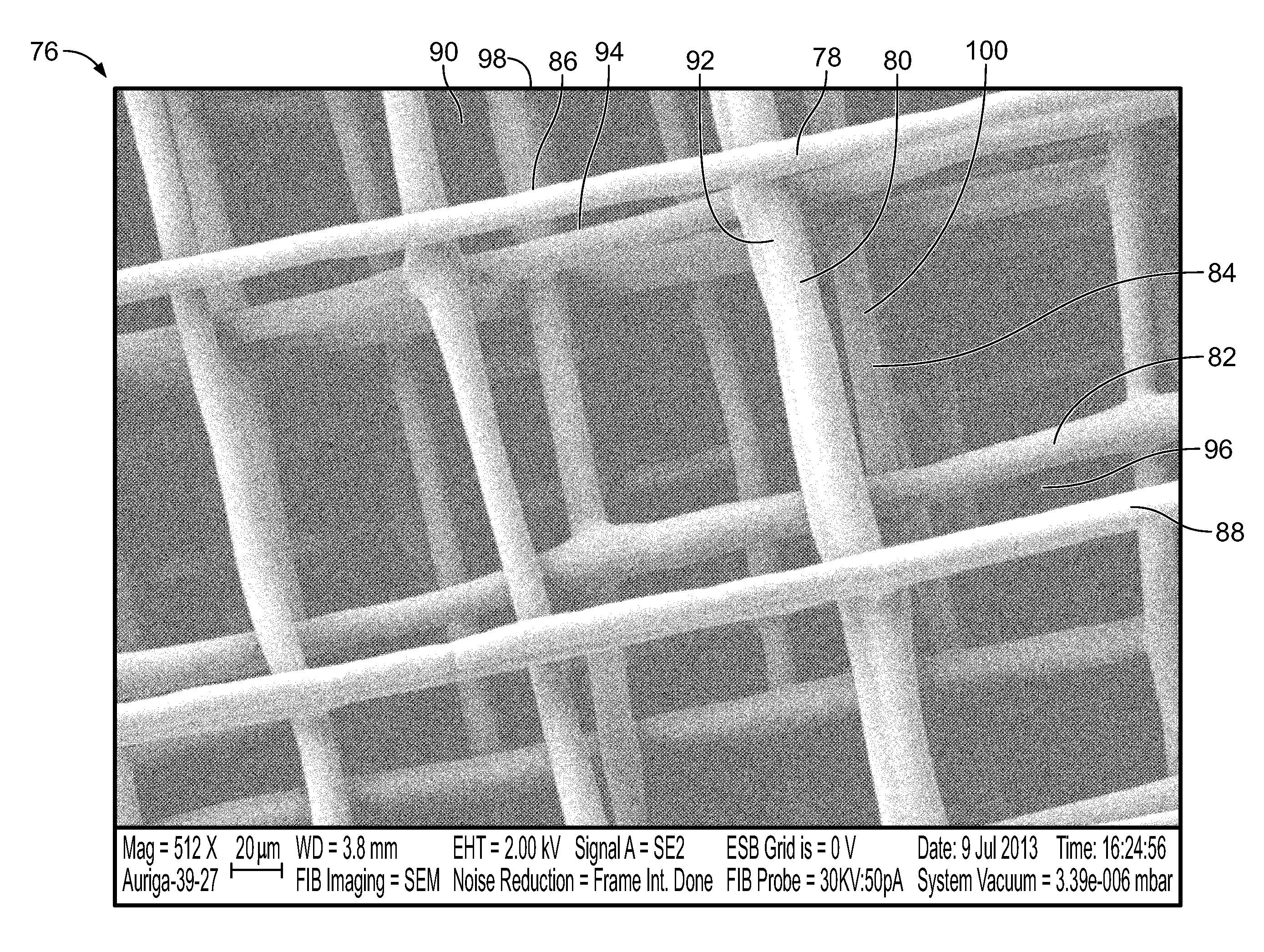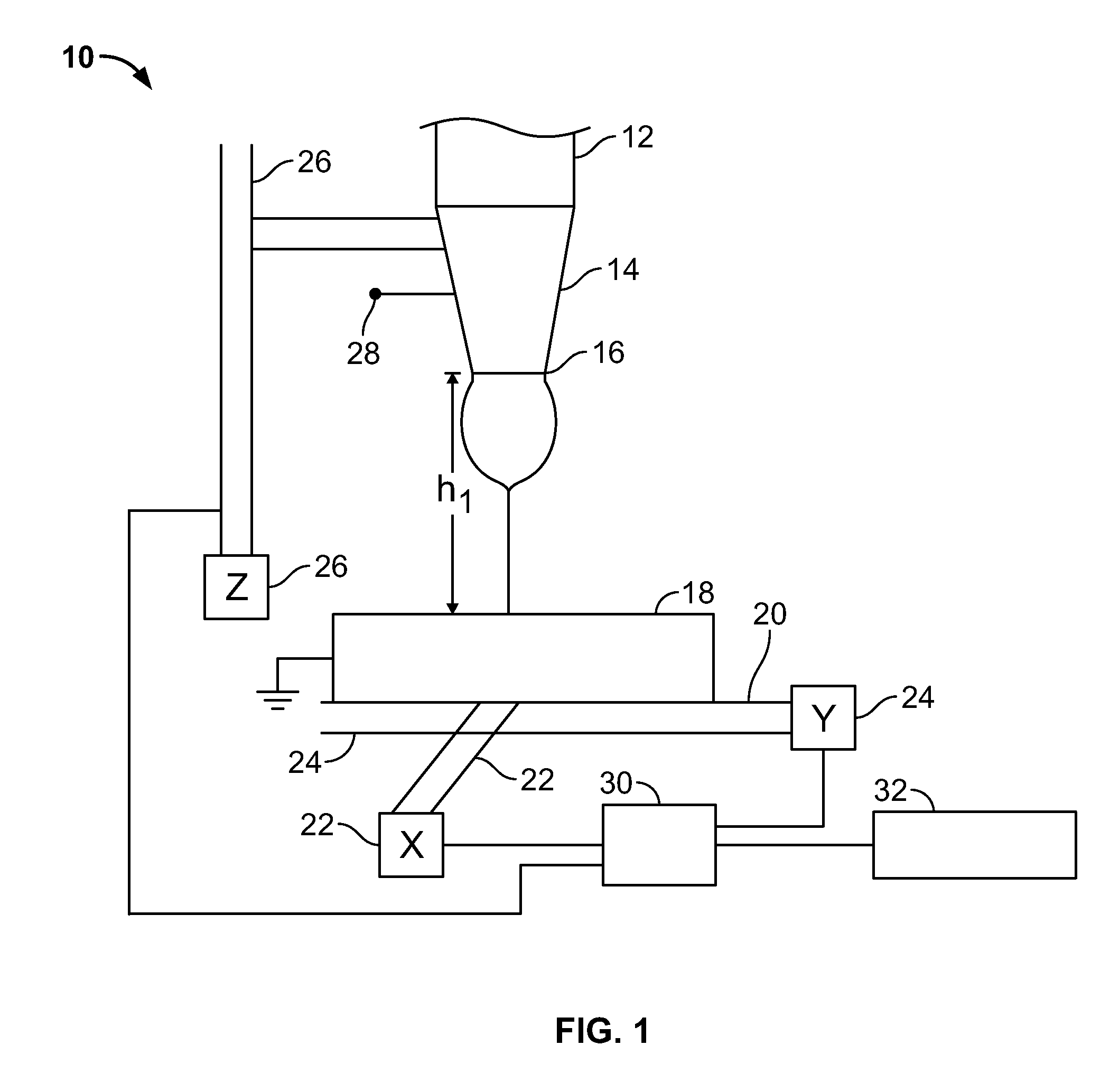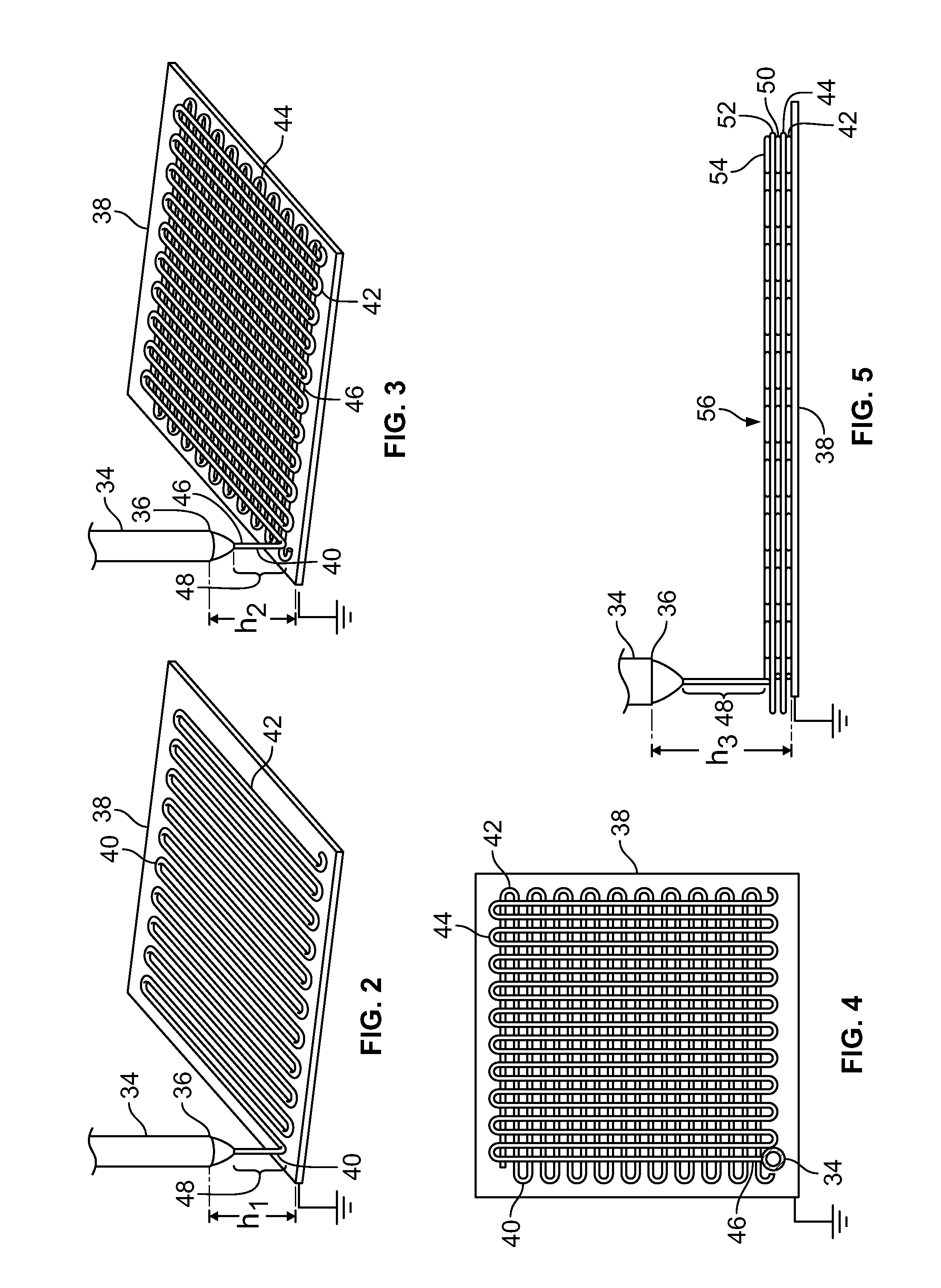Hierarchical multiscale fibrous scaffold via 3-d electrostatic deposition prototyping and conventional electrospinning
a fibrous scaffold and multi-scale technology, applied in the field of scaffolds, can solve the problems of weakening the mechanical strength of nanofibers, limited possibility to increase the pore size of nanofiber meshes or mats by manipulating fiber diameters, etc., and achieves the effect of large pore size and high surface area
- Summary
- Abstract
- Description
- Claims
- Application Information
AI Technical Summary
Benefits of technology
Problems solved by technology
Method used
Image
Examples
experimental examples
[0043]The following discussions present non-limiting examples of certain embodiments of the methods and scaffolds of the present invention. Persons having ordinary skill in the relevant arts and possession of the present disclosure may make numerous modifications and variations on these embodiments without departing from the spirit and scope of the invention.
[0044]FIGS. 7-10 are microscopic images of scaffolds 62, 64 according to embodiments of the present invention. The scaffold 62 of FIGS. 7 and 8 consists of 44 layers of microfibers deposited in alternating antiparallel patterns (see, e.g, fiber 66 from a horizontal layer (relative to the orientation of the figure), and fiber 68 from an adjacent vertical layer). The interfiber spacing of the microfibers is about 200 μm, and the microfiber diameters are generally in the range of 10 μm to 20 μm. The scaffold 62 has a thickness of about 160 μm, and the microfiber diameters are generally in the range of 10 μm to 20 μm. The scaffold 6...
PUM
| Property | Measurement | Unit |
|---|---|---|
| diameters | aaaaa | aaaaa |
| diameters | aaaaa | aaaaa |
| diameter | aaaaa | aaaaa |
Abstract
Description
Claims
Application Information
 Login to View More
Login to View More - R&D
- Intellectual Property
- Life Sciences
- Materials
- Tech Scout
- Unparalleled Data Quality
- Higher Quality Content
- 60% Fewer Hallucinations
Browse by: Latest US Patents, China's latest patents, Technical Efficacy Thesaurus, Application Domain, Technology Topic, Popular Technical Reports.
© 2025 PatSnap. All rights reserved.Legal|Privacy policy|Modern Slavery Act Transparency Statement|Sitemap|About US| Contact US: help@patsnap.com



